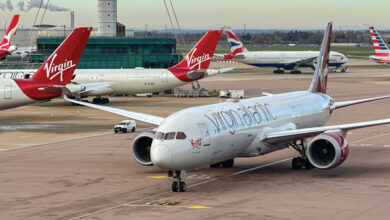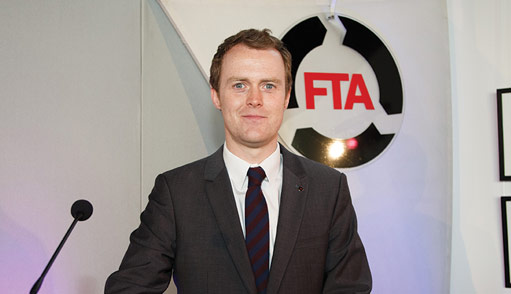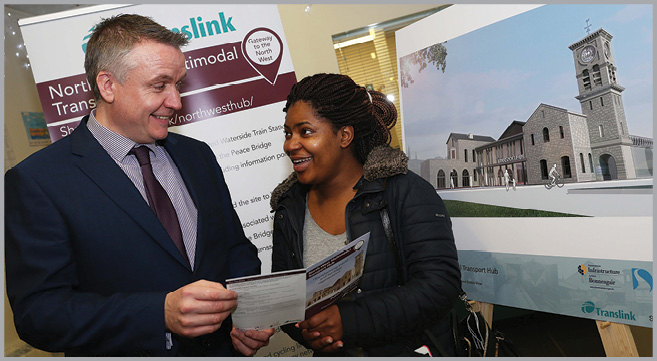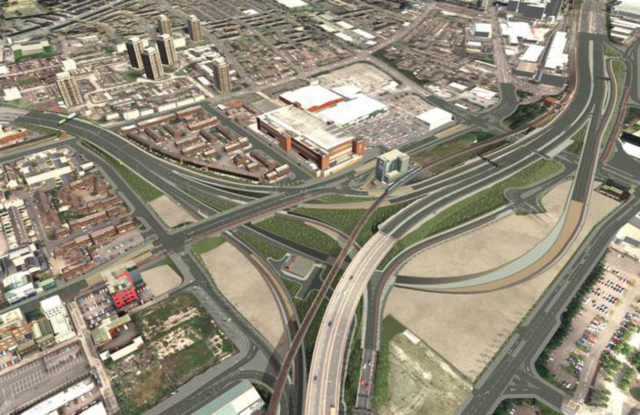Improving public transport
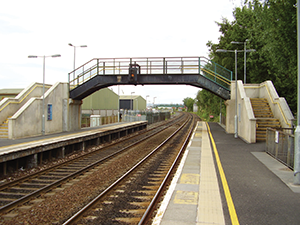 Following the recent publication of the Northern Ireland Audit Office’s (NIAO) report on the effectiveness of public transport in Northern Ireland, Adam Morton highlights its key findings.
Following the recent publication of the Northern Ireland Audit Office’s (NIAO) report on the effectiveness of public transport in Northern Ireland, Adam Morton highlights its key findings.
The NIAO’s report on the effectiveness of public transport in Northern Ireland assessed the performance, funding and structures of public transport against the Department for Regional Development’s initiatives and targets over the period 2002-2014 as set out in the department’s Regional Transportation Strategy (RTS) for Northern Ireland 2002-2012.
Structure
Public transport in Northern Ireland is controlled by the department, its Public Transport Services Division (PTSD) is responsible for the discharge of statutory and other duties in in respect of public transport. PTSD sponsors the Northern Ireland Transport Holding Company, the corporation responsible to the department for the operation of Translink.
In April 2013, a separate division of the department was created. TransportNI, as it is known, is responsible for road maintenance services and the management and development of the transport network. The report found that the staff and resources allocated to roads in this division greatly outnumbered the staff and resources allocated to public transport and that the necessary skills to effectively manage public transport do not exist within the department.
To address this, the report recommends that the department carries out on-going comparative research to benchmark its structure and performance against other public transport functions to ensure they have the optimal model in terms of size, shape and required skillsets.
The report found that public transport has an essential role in the economy and community of Northern Ireland and that an effective public transport system can:
• Benefit the local economy by bringing workers and jobs together;
• Help reduce emissions and traffic congestion by promoting a more sustainable form of transport than the car;
• Increase the mobility of older people, rural dwellers and those with disabilities.
Targets
In general, the report found that the vast majority of targets set under RTS have been achieved. However, the report also reached the conclusion that the performance of public transport in Northern Ireland since 2002 has been mixed.
The £1.1 billion investment in public transport, prompted by the RTS, has led to improvements in infrastructure and has transformed rail travel according to the report. However, the same cannot be said for bus passenger journeys. Overall they are up 1.5 per cent to 66.9 million from 2002-03 to 2013-14. The majority of this increase, the report states, came from an increase in the use of the Metro service.
In contrast, Ulsterbus suffered a 12 per cent decline in passenger journeys and the number of non-fare paying passengers on buses in Northern Ireland has increased by 13.4 per cent from 2002-03 to 2013-14. The report states that whilst public transport should have a public service element, the increase in concessionary fare passengers distorts the market and doesn’t aid in shifting the public’s reliance on the car as their preferred mode of transport.
The report advises the department to ensure it has the capability to understand public transport demand and that it takes steps to research, develop and monitor behaviour change measures in order to successfully encourage people to switch to public transport.
Despite the significant investment in public transport over the past 14 years, the report found that there had be no modal shift from the car to public transport. In fact, in contrast to the rest of Great Britain, where there has been an uptake in the use of public transport, public transport’s share of work related trips decreased in Northern Ireland by one per cent to seven per cent from 2001-2011.
To address this, the report recommends that the department seeks to understand the attitudes and behaviours of potential passengers and set consistent and coherent targets over a defined period for modal shift. The report also recommends that the department benchmark Northern Ireland’s results in this area against other jurisdictions to identify local adaptable solutions that over time, will boost local performance. It also stressed that costs incurred in road maintenance should not jeopardise the strategic commitment to modal shift.
The report also found that despite the plan to increase peak bus speeds in the Belfast metropolitan area by 15 per cent from their 2001 level, morning peak speeds have actually declined by 19 per cent and that Belfast’s planned rapid transit service, originally intended to connect East Belfast, West Belfast and Titanic Quarter via the city centre by 31 March 2012, has been hit by significant delays and will not be in operation until autumn 2017 at earliest.
Benchmarking
The NIAO also reviewed the departments benchmarking work and carried out its own analysis to provide insight about performance here relative to elsewhere in the United Kingdom. Ulsterbus and Metro services performed relatively well in terms of operating cost per bus and staff per bus when compared to other operators across the United Kingdom. However, staff wages and management overheads tended to be higher than those found at other operators.
To improve in this area, the report recommends that Translink undertakes a more in-depth examination of comparative management/staff ratios to better draw reliable conclusions on whether and to what extent any change is required in their workforce balance.
The NIAO’s analysis also found that:
• Ulsterbus provides a higher level of service than comparable regions in Great Britain;
• Metro service levels compared less favourably than similar city regions in Great Britain;
• Bus fares in Belfast are relatively comparable with other British cities;
• Passengers on Metro and Ulsterbus enjoy relatively high levels of comfort, however, Metro customers were less satisfied than bus customers in other parts of Great Britain.
To increase customer satisfaction on Metro services the report recommends that Translink regularly benchmark its customer satisfaction surveys with other bus operators and adopt the methods used by Northern Ireland Railways (NIR) who have relatively good customer satisfaction ratings.
The report was very positive about NIR. It found that NIR services operated as efficiently as benchmark comparators, rail customer satisfaction ratings compared favourably to their counterparts in Great Britain and that rail fares are generally cheaper than in other parts of the United Kingdom.
However, the report noted that rail journeys remain relatively slow for journeys of more than 50 miles and this is having an adverse effect on revenue.
To tackle this problem the NIAO recommends that the department, in conjunction with Translink, investigate investment in backlog track maintenance and track renewal to improve line speeds and increase revenues.
With these recommendations in place, the report is now in the hands of the department for its consideration.

